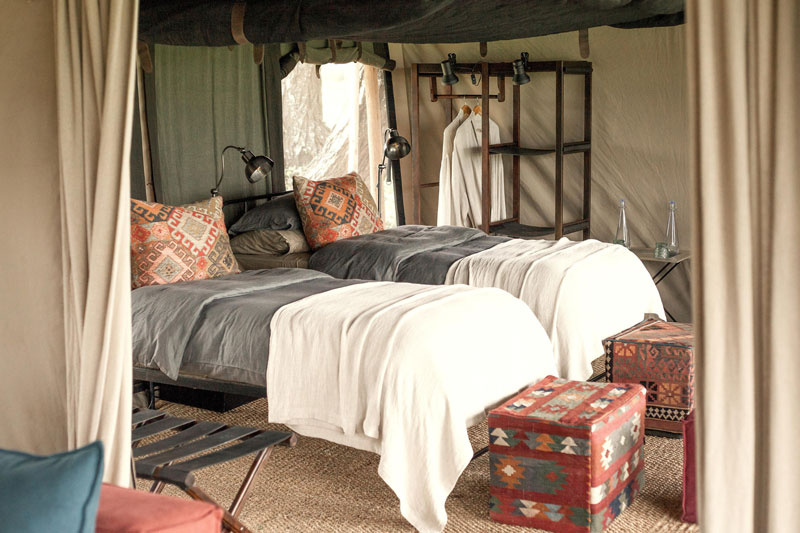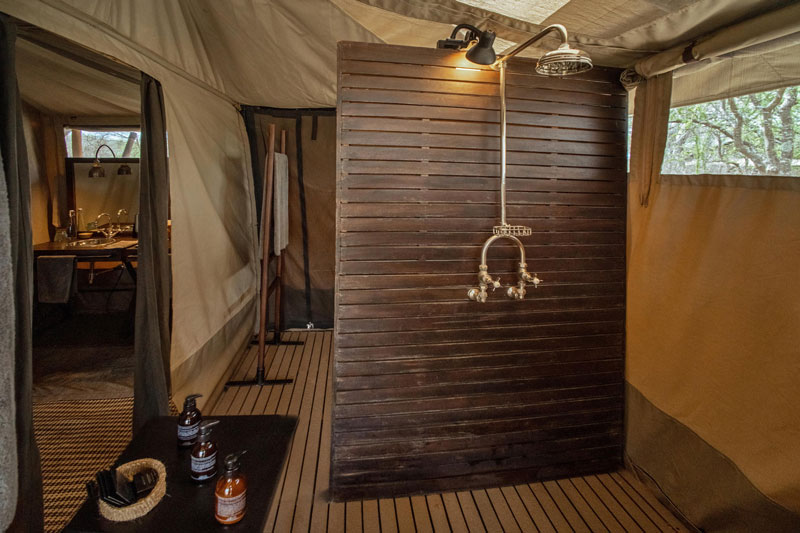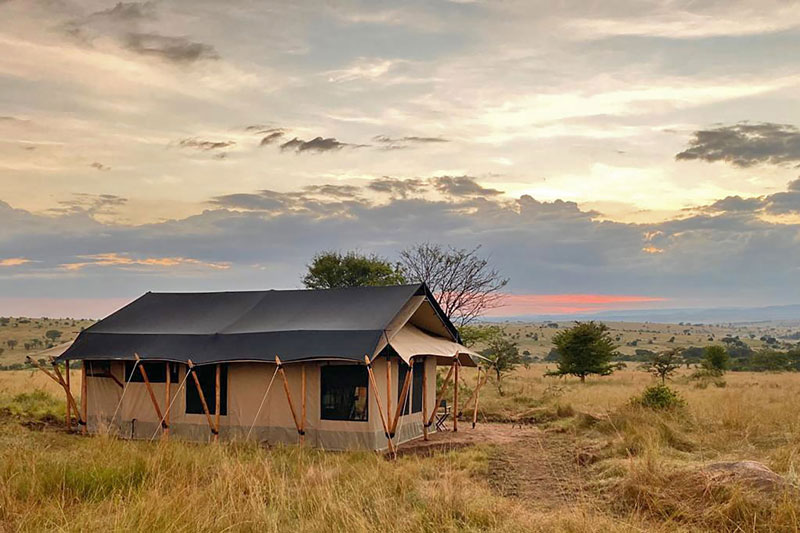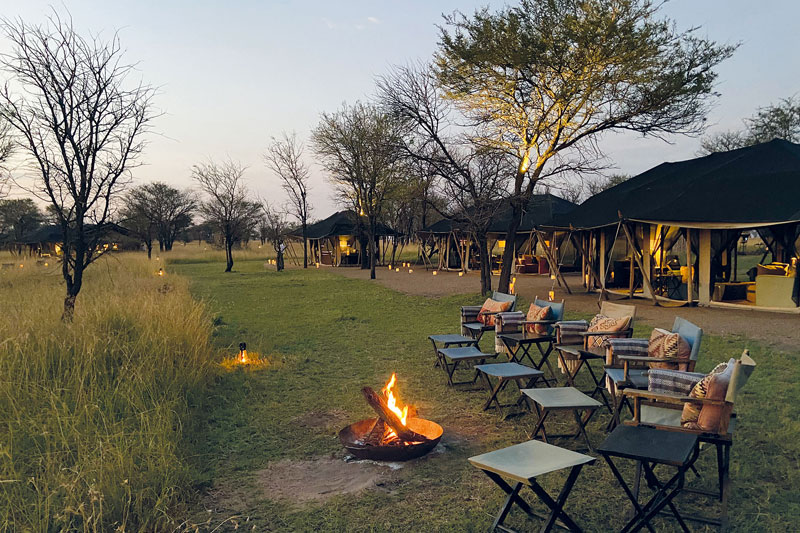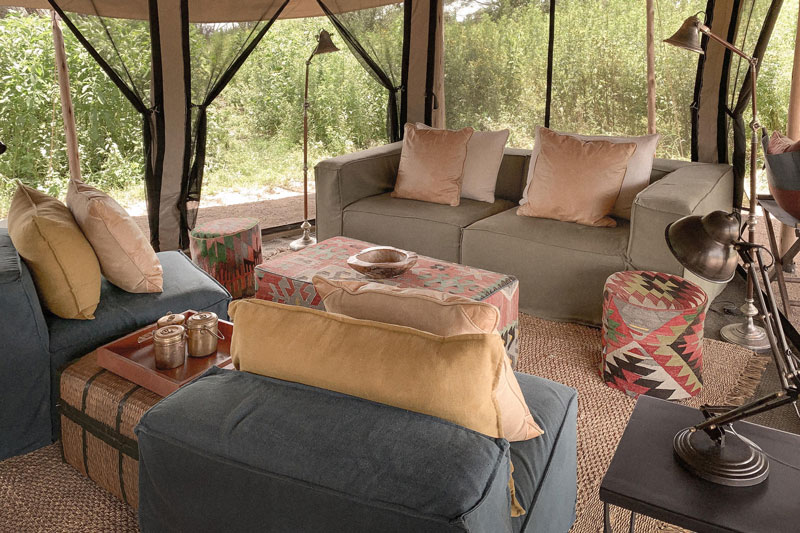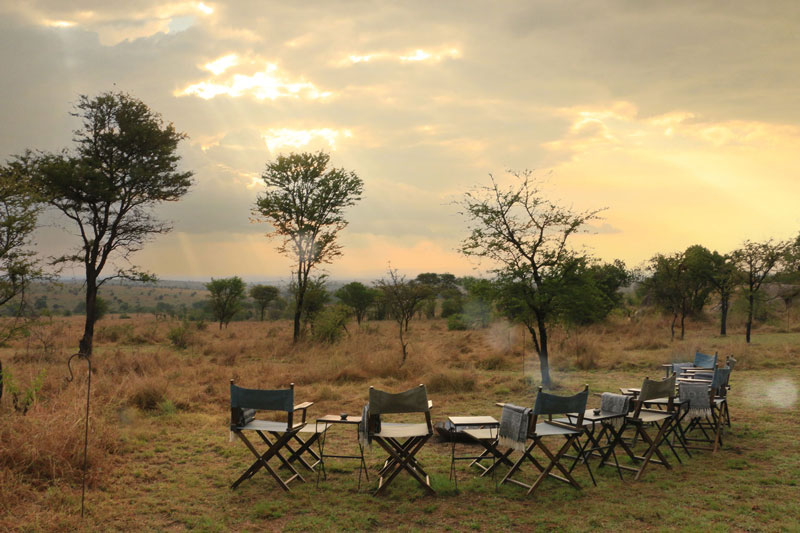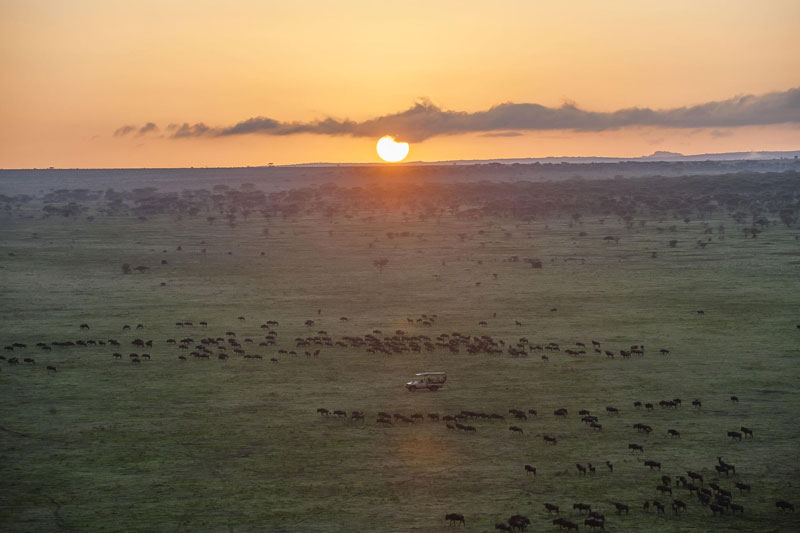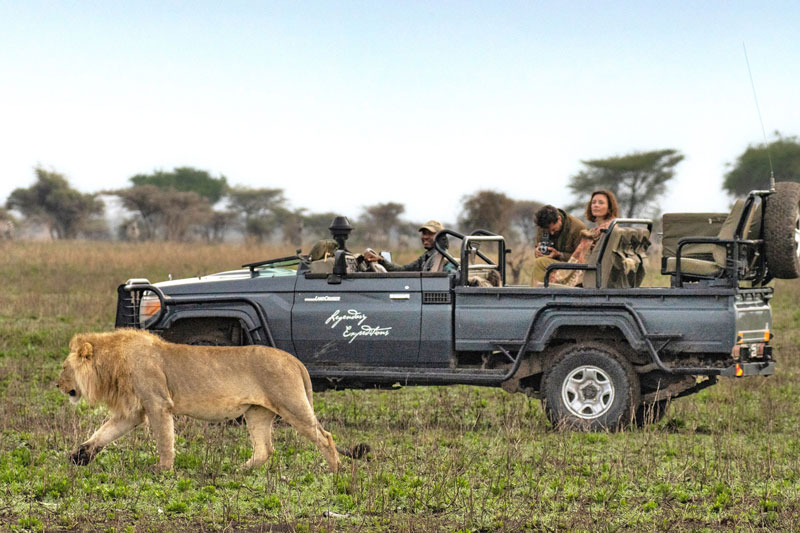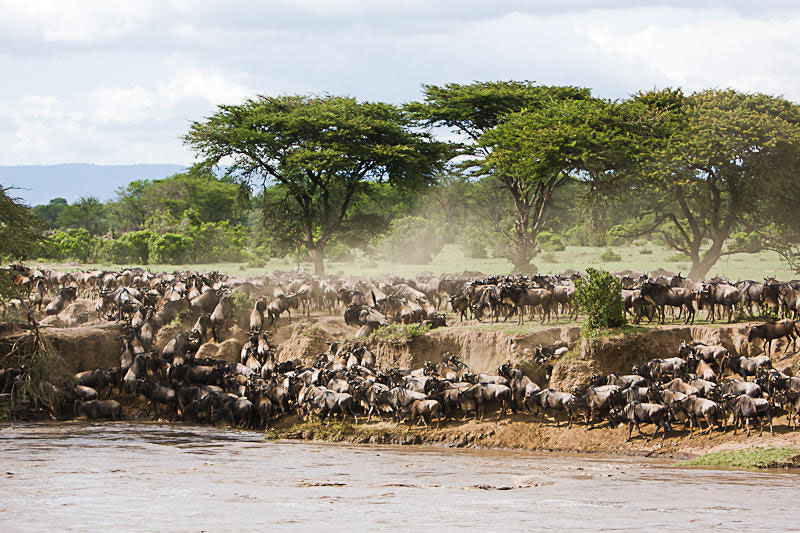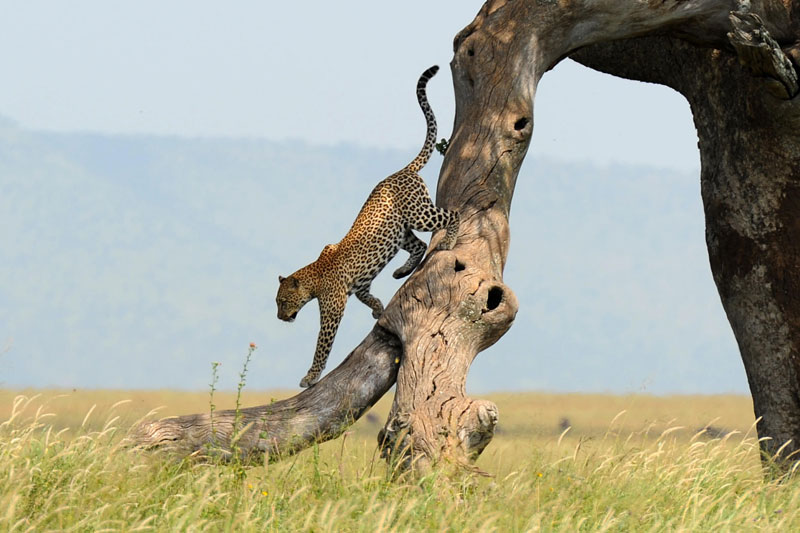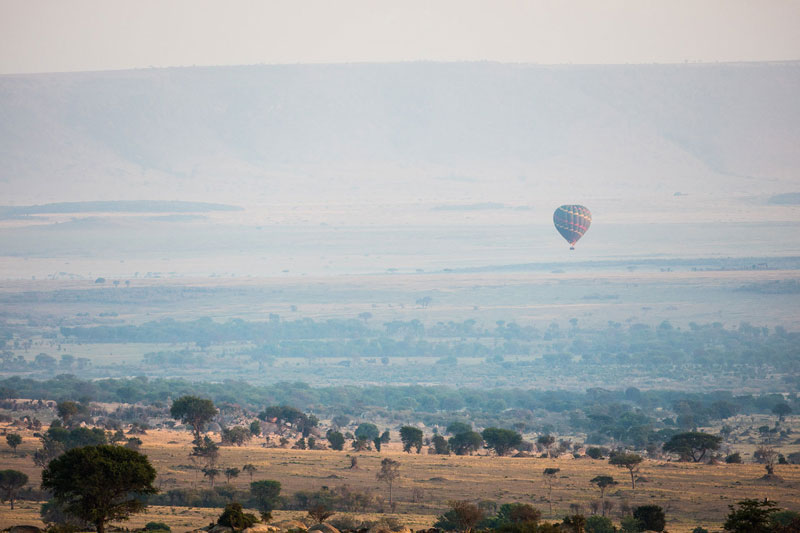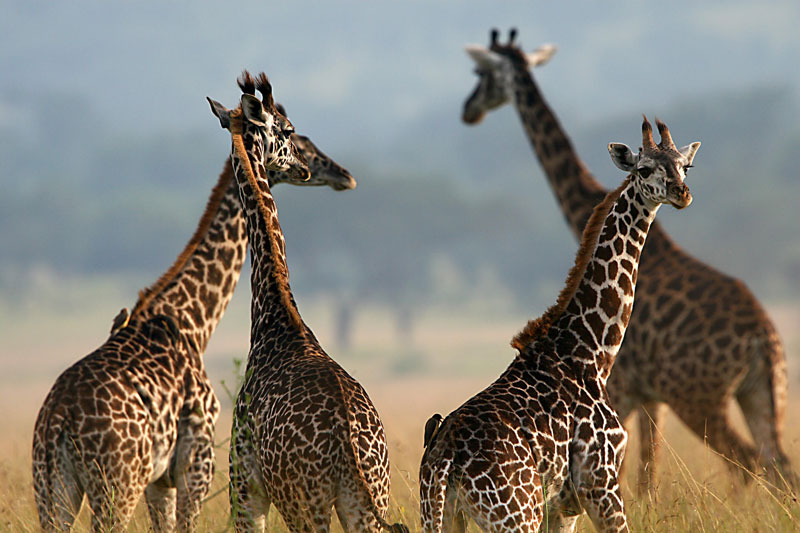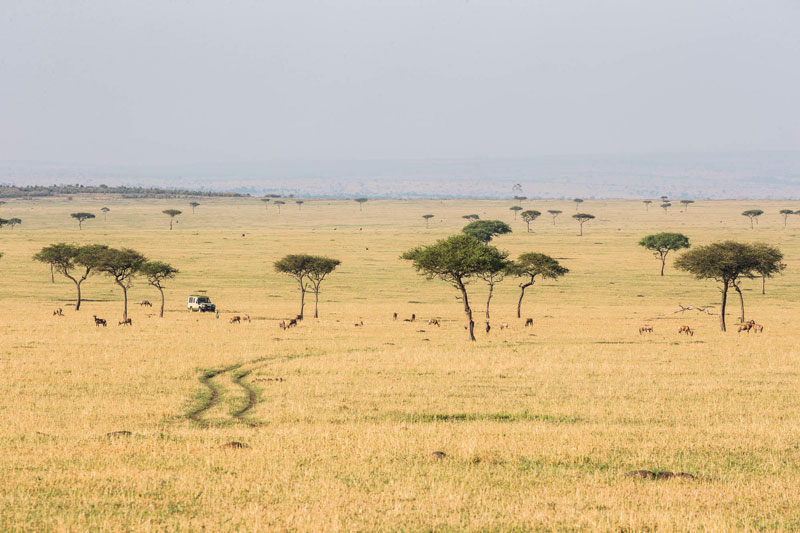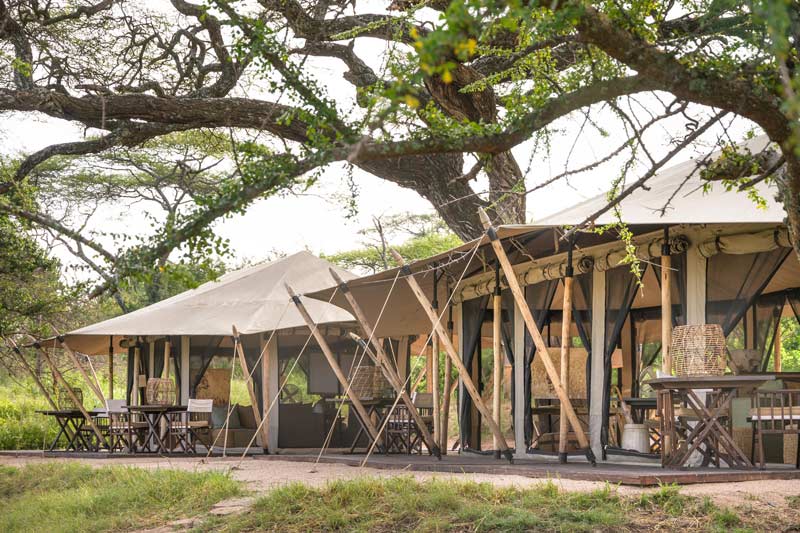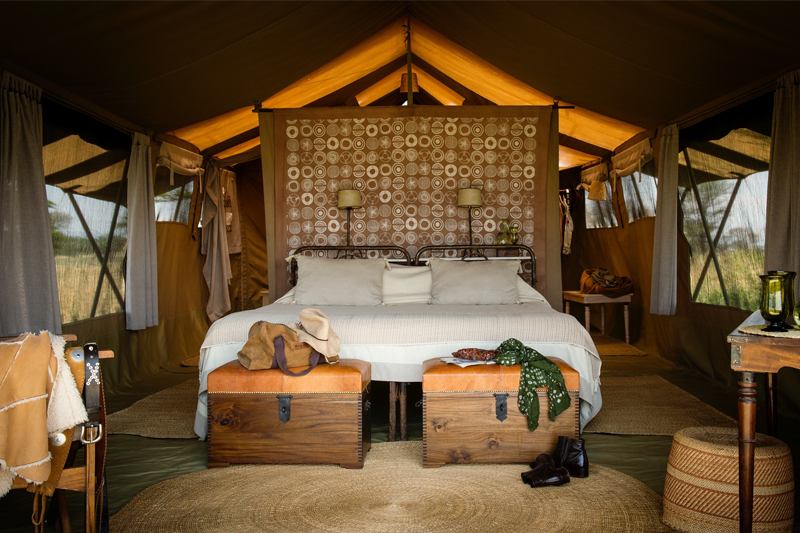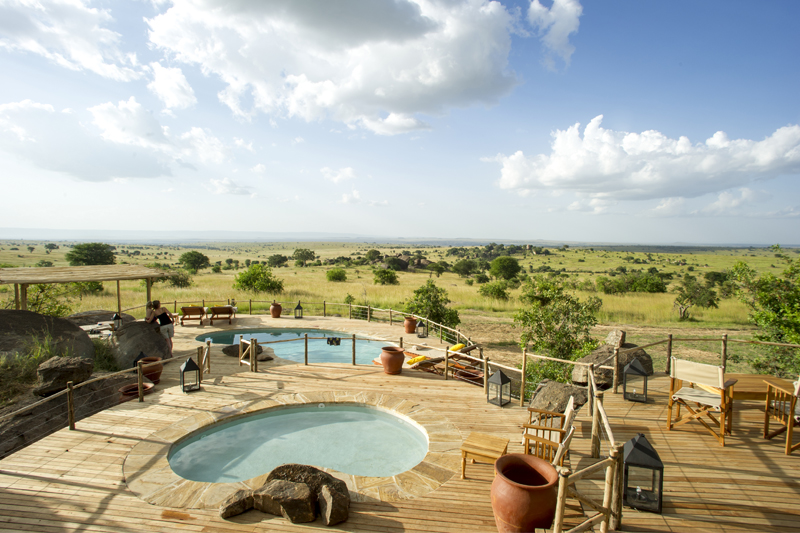Nyasi Tented Camp
Nyasi Tented Camp is located in the exclusive Lamai section of the northern Serengeti National Park.
Nyasi Tented Camp is one of Legendary Expeditions’ permanent tented camps, and offers a similar experience to sister camps Mila and Songa. The tents themselves are very comfortable and luxuriously furnished, whilst maintaining the feel of an authentic tented experience. The central areas offer a similarly simple but elegant set up, with sophisticated lounge and dining tents leading out to camp fire areas with views out over the surrounding plains. The food and service are superb, and their guides are very good too. A key factor to consider with all Legendary Expeditions camps is that they focus very hard on providing an exclusive safari environment for each group of guests. A private guide and vehicle are included as standard, but Nyasi also provides private dining and private sunset drinks for all bookings. Nyasi is not the right camp if you are seeking communal dining and a vibrant bar in the evening, but is perfect for any couple, family or group seeking a very sophisticated and private tented camp experience.
Rooms
The camp is split into two separate “mini camps”, each operating independently from the other (however, they may be combined for a large group) – they face in different directions and use the natural bush habitat to create seclusion between the two sections. Between June and October the camp has eight tents, including two family tents (during this time there is the option to book one side of the camp comprising two standard tents and one family tent on a private basis). From November to January the camp comprises seven tents with only one family tent. The family tents each have two interconnecting en suite tents with a shared lounge. All tents are built on the ground with a landscape orientation to maximise the views. The tents are very comfortably furnished with a large bed, writing desk, standing fan and en suite facilities including a flush toilet and plumbed shower.
Central Areas
There is a separate central area with a lounge and dining tent and campfire for each section of the camp.
Facilities
Wi-Fi – Yes
Power for Charging – Yes
Swimming Pool – No
Habitat & Wildlife
With an area of some 14,000 sq. km, Serengeti is probably the best-known wildlife sanctuary in the world. The ecosystem includes the National Park itself, the Ngorongoro Conservation Area, Maswa Game Reserve and Kenya’s Masai Mara National Reserve, together forming one of the most complex and least disturbed ecosystems on earth. The landscape was originally formed by volcanic activity in the Ngorongoro highlands and it varies from the open short grass plains in the south, to savannah and scattered acacia woodlands in the centre, to extensive woodland and black clay plains in the west, to hilly wooded grassland in the north. Most of the permanent water is found towards the northern and western areas, the lack of permanent water and food in the south being the main reason for the annual migration.
The park is home to approaching 2,000,000 wildebeest, 500,000 Thomson’s gazelle and 250,000 zebra: the largest concentration of plains game in Africa. More than 30 species of herbivores are found here, as well as all the major predators and nearly 500 species of birds.
The northern part of Serengeti is a huge area of open plains, rolling hills and acacia woodland, intersected by numerous small streams which flow into the Mara River. The Mara River is a natural focal point, and most camps are located in the Kogatende region to the south of the river. The area to the north of the river is a comparatively quiet section of the park known as Lamai and this is where Nyasi Tented Camp is located. To the south of Kogatende are the Wogakuria Hills where the rolling hills are interspersed with rocky granite outcrops. The plains stretch east and west to the boundaries of the park, and in the east continue into the Loliondo Game Controlled Area.
The northern Serengeti is exceptional for lion, cheetah and leopard sightings, whilst hyaena, serval, African wild cat, elephant, buffalo, hippo, crocodile, giraffe, eland, topi, jackal, ostrich and impala can also be seen. Wild dogs are making a comeback in the region and are very occasionally encountered, whilst black rhino can sometimes be seen in the north-eastern region around the Sand River.
Although this region offers a wonderful all year round safari experience, it is busiest from July to October when hundreds of thousands of wildebeest, gazelles and zebra congregate on these northern plains. The herds usually arrive in late June or early July, travelling up from the southern and western Serengeti on their annual migration. Many of the herbivores will cross into Kenya’s Masai Mara, but large numbers remain in the northern reaches of the Serengeti, where the Mara River provides permanent water. This movement of so many animals can be dramatic, especially when they cross the Mara River, which can happen at any time between July and early November. ‘River Crossings’ are a favoured highlight for wildlife enthusiasts and photographers, as hundreds of wildebeest stampede into the river whilst crocodiles lie in wait. Around October/November, as the rain clouds gather, the herds head south once more to calve on those nutritious short grass plains before starting the cycle again.
Activities
Activities focus on game drives during the day, being in the National Park, but these can be flexible to suit, with your own private guide and vehicle. Guided walks are also available.
Seasons
Nyasi Tented Camp is open from June through to early January. The migration season is between July and October, but outside of this period, general game viewing in the northern Serengeti is still good with excellent resident wildlife, and the experience is more exclusive with fewer camps open and far fewer tourists around.
Children are welcome from the age of four years. Nyasi Tented Camp offers good family tent options and the flexibility of a private guide and vehicle, however with activities limited to game drives, it will naturally suit families travelling with older children looking for an exclusive big game Serengeti experience. The exclusive camp option available between June and October would offer a wonderfully exclusive stay for a larger family.
Every guest staying in a Legendary Expeditions safari camp contributes a voluntary contribution that goes towards the community projects supported by the Friedkin Conservation Fund (Legendary Expedition’s philanthropic and conservation arm) including education, health and income generation activities for the rural communities in the areas the camps are located.
These community projects are part of a wider, multi-faceted approach to the conservation of the areas in which Legendary Expeditions operates. Much of the Fund’s work focuses on measures to ease human-wildlife conflict. Operating in the buffer zones between the Serengeti National Park and local settlements (Legendary Expeditions manages Mwiba and Maswa Wildlife Reserves which together comprise eight percent of the entire protected Greater Serengeti and Ngorongoro Crater ecosystems) means Legendary Expeditions are well placed to make significant impact in resolving human-wildlife conflict and helping communities to benefit from wildlife and habitat conservation.
2024 will see the role out of the Economic Empowerment Project which has identified income-generating opportunities to sustainably support communities in the southern Serengeti ecosystem centering around honey, poultry and sunflowers. In partnership with Hand in Hand Tanzania, entrepreneurial training will be given in these areas to equip community members with the skills needed to start small businesses and create income streams and further job opportunities.
Efforts also focus on education and the Fund has succeeded in reducing low school attendance through an engaging environmental education initiative, a school nutrition program and the construction of new school infrastructure.
Conservation work includes wildlife monitoring, specifically the collaring of elephants (to address human-wildlife conflict problems) and supporting the Serengeti Rhino Repatriation Project’s rhino monitoring program. Anti-poaching measures are also key and the Fund supports the Tanzanian authorities with anti-poaching teams and aerial surveillance.




